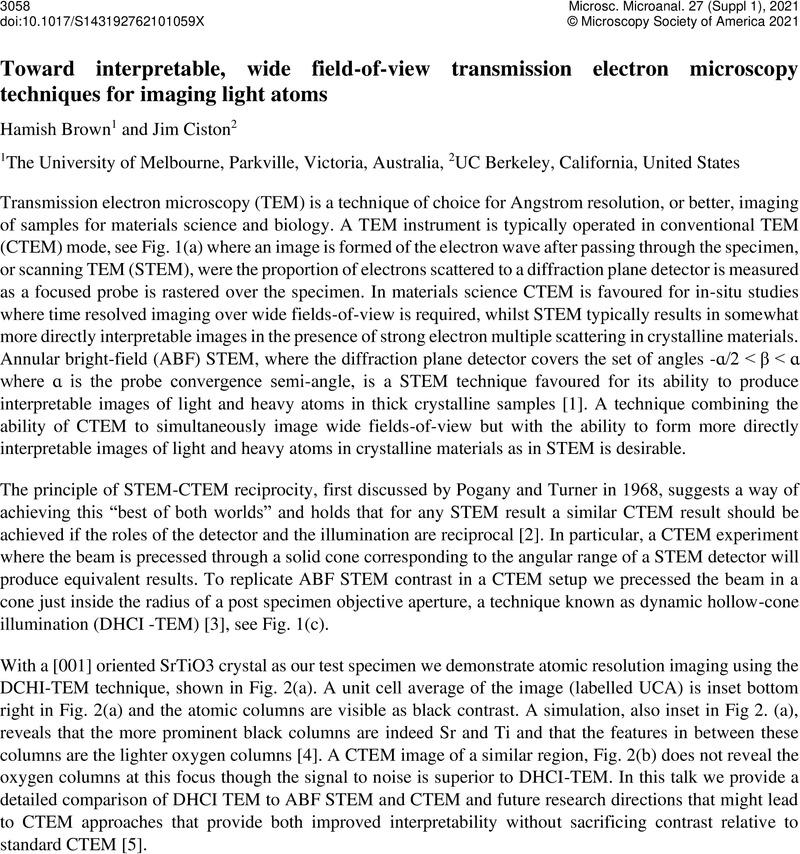No CrossRef data available.
Article contents
Toward interpretable, wide field-of-view transmission electron microscopy techniques for imaging light atoms
Published online by Cambridge University Press: 30 July 2021
Abstract
An abstract is not available for this content so a preview has been provided. As you have access to this content, a full PDF is available via the ‘Save PDF’ action button.

- Type
- Many Detectors Make Lights Work: Advances in Microanalysis of Light Elements in Synthetic and Natural Materials
- Information
- Copyright
- Copyright © The Author(s), 2021. Published by Cambridge University Press on behalf of the Microscopy Society of America
References
Findlay, S. D., et al. "Robust atomic resolution imaging of light elements using scanning transmission electron microscopy." Applied Physics Letters 95.19 (2009): 191913.CrossRefGoogle Scholar
Pogany, A. P., and Turner, P. S.. "Reciprocity in electron diffraction and microscopy." Acta Crystallographica Section A: Crystal Physics, Diffraction, Theoretical and General Crystallography 24.1 (1968): 103-109.Google Scholar
Kunath, W., Zemlin, F., and Weiss, K.. "Apodization in phase-contrast electron microscopy realized with hollow-cone illumination." Ultramicroscopy 16.2 (1985): 123-138.CrossRefGoogle Scholar
Brown, Hamish G., and Ciston, Jim. "Atomic Resolution Imaging of Light Elements in a Crystalline Environment using Dynamic Hollow-Cone Illumination Transmission Electron Microscopy." Microscopy and Microanalysis 26.4 (2020): 623-629.CrossRefGoogle Scholar
Work at the Molecular Foundry was supported by the Office of Science, Office of Basic Energy Sciences, of the U.S. Department of Energy under Contract No. DE-AC02-05CH11231. HGB and JC acknowledge additional support from the Presidential Early Career Award for Scientists and Engineers (PECASE) through the U.S. Department of Energy. The authors acknowledge sample preparation support from Thermo Fisher Scientific. Helpful discussions with Dr. Alex Eggeman of the University of Manchester are also acknowledged.Google Scholar





